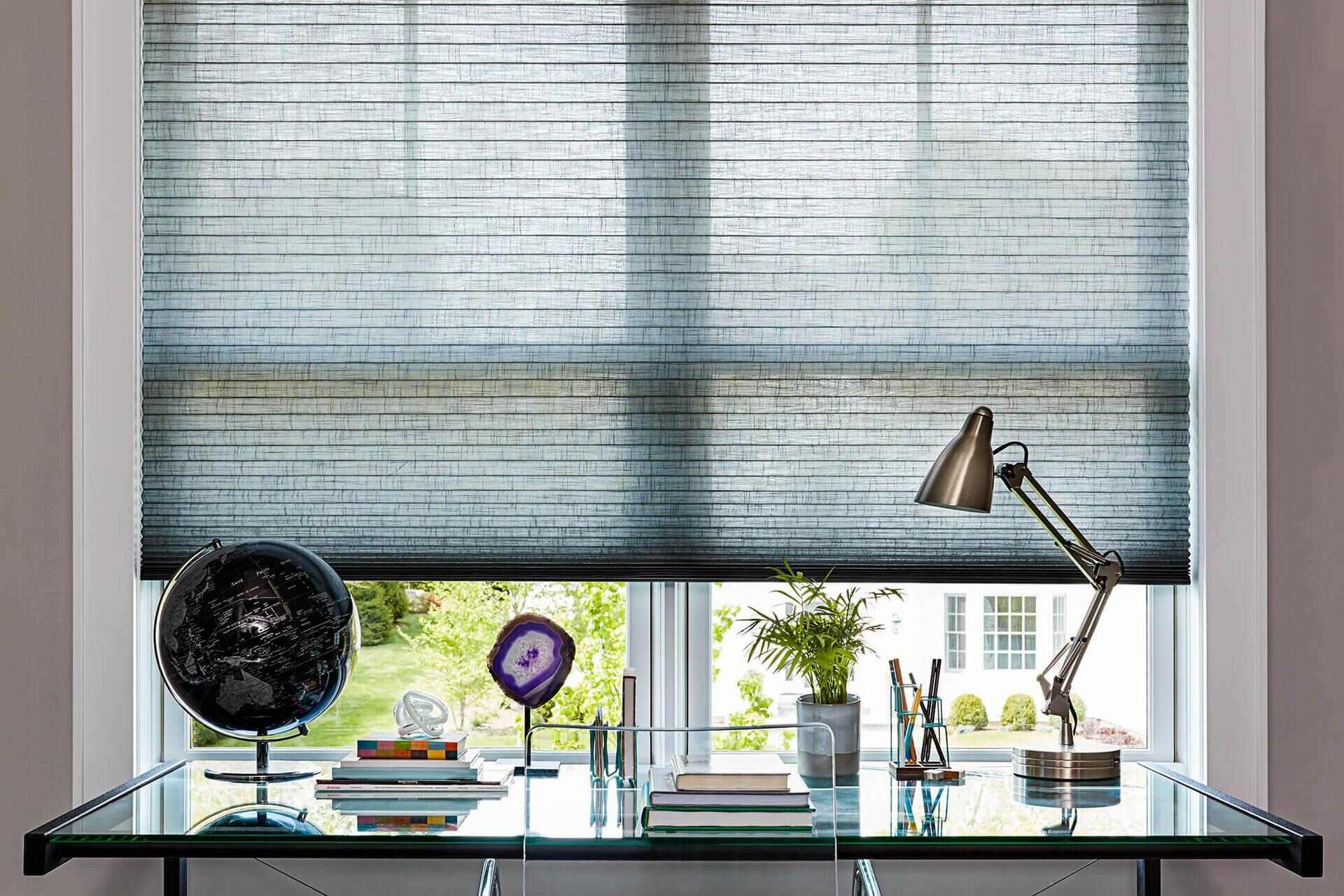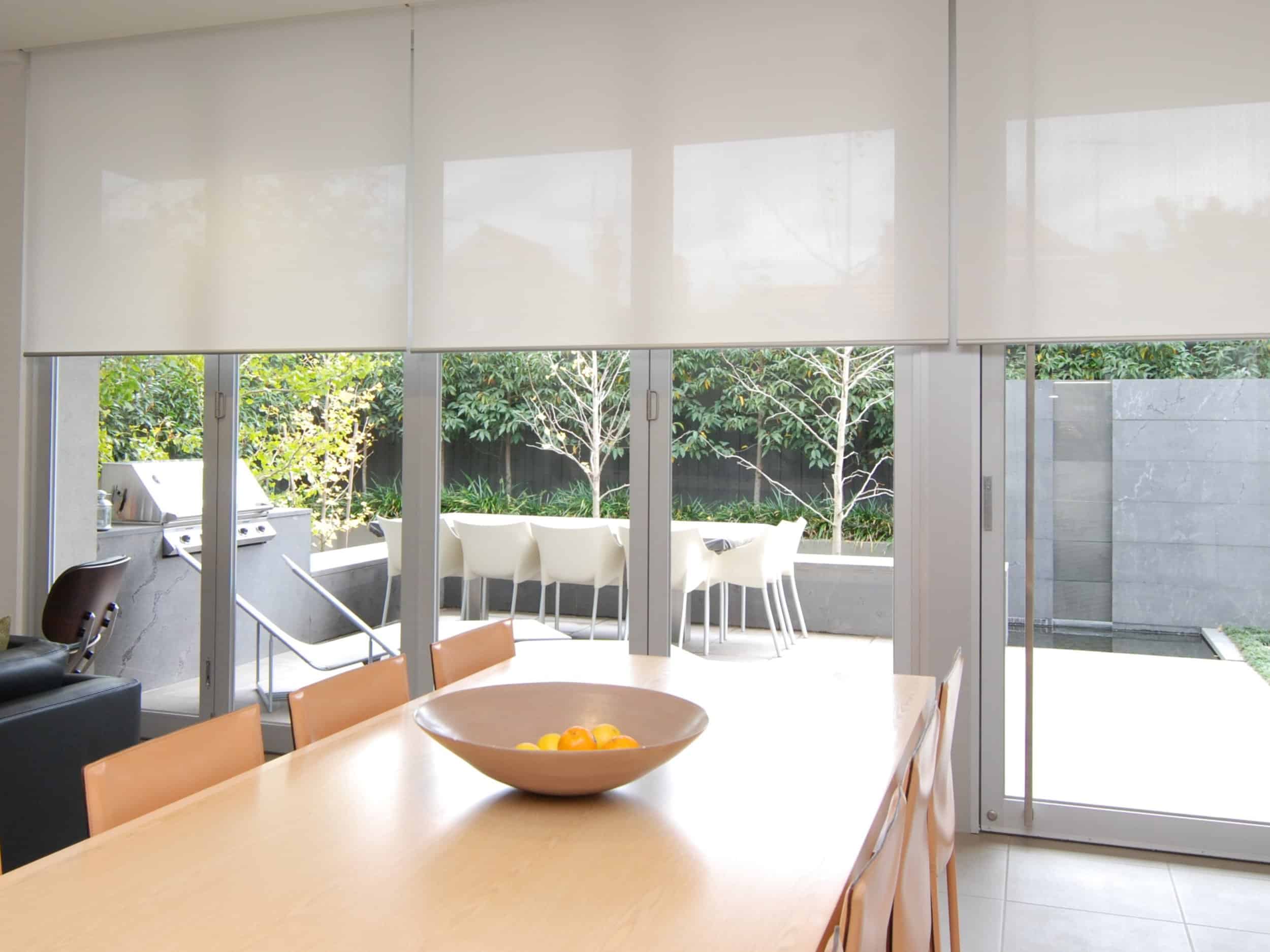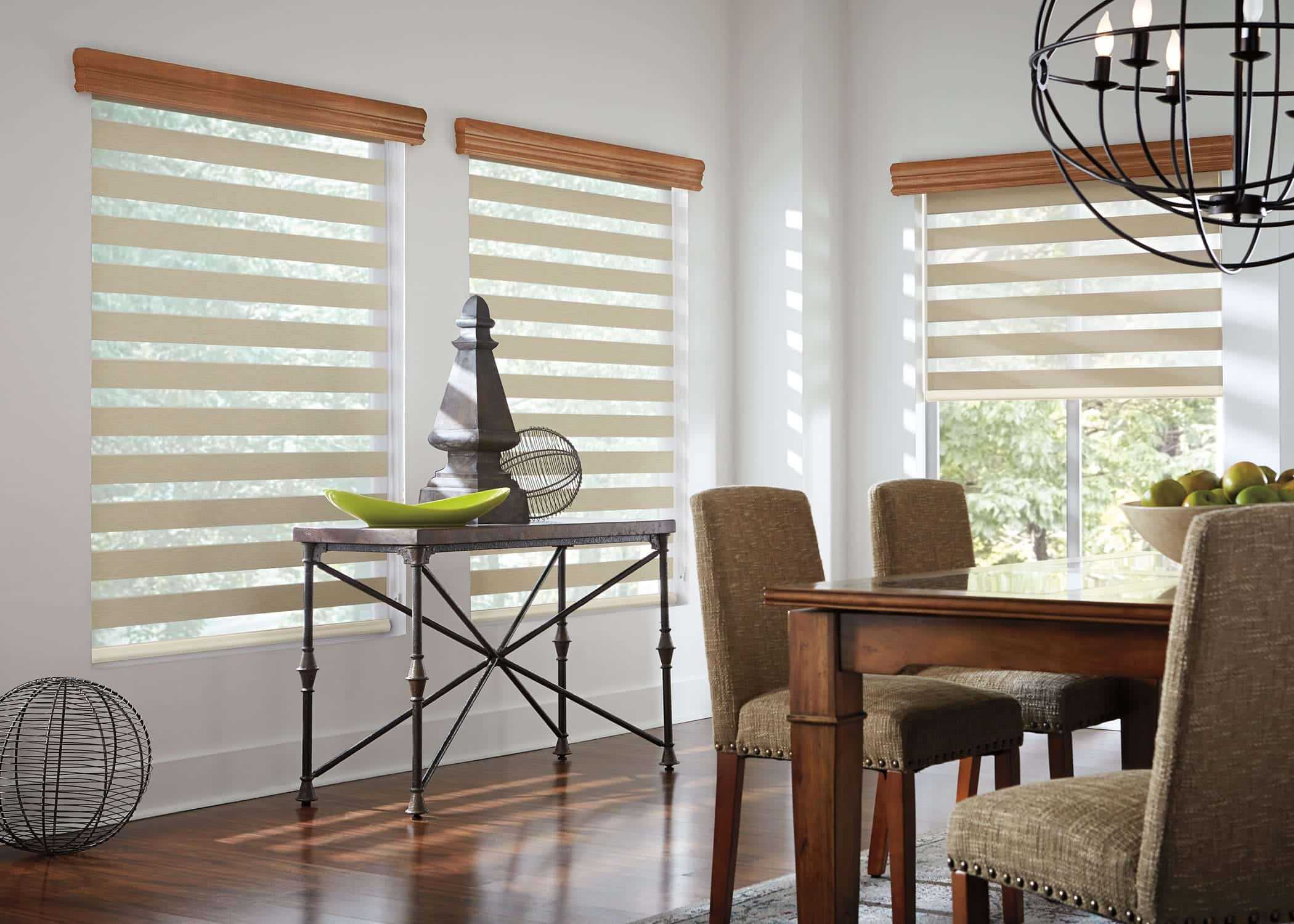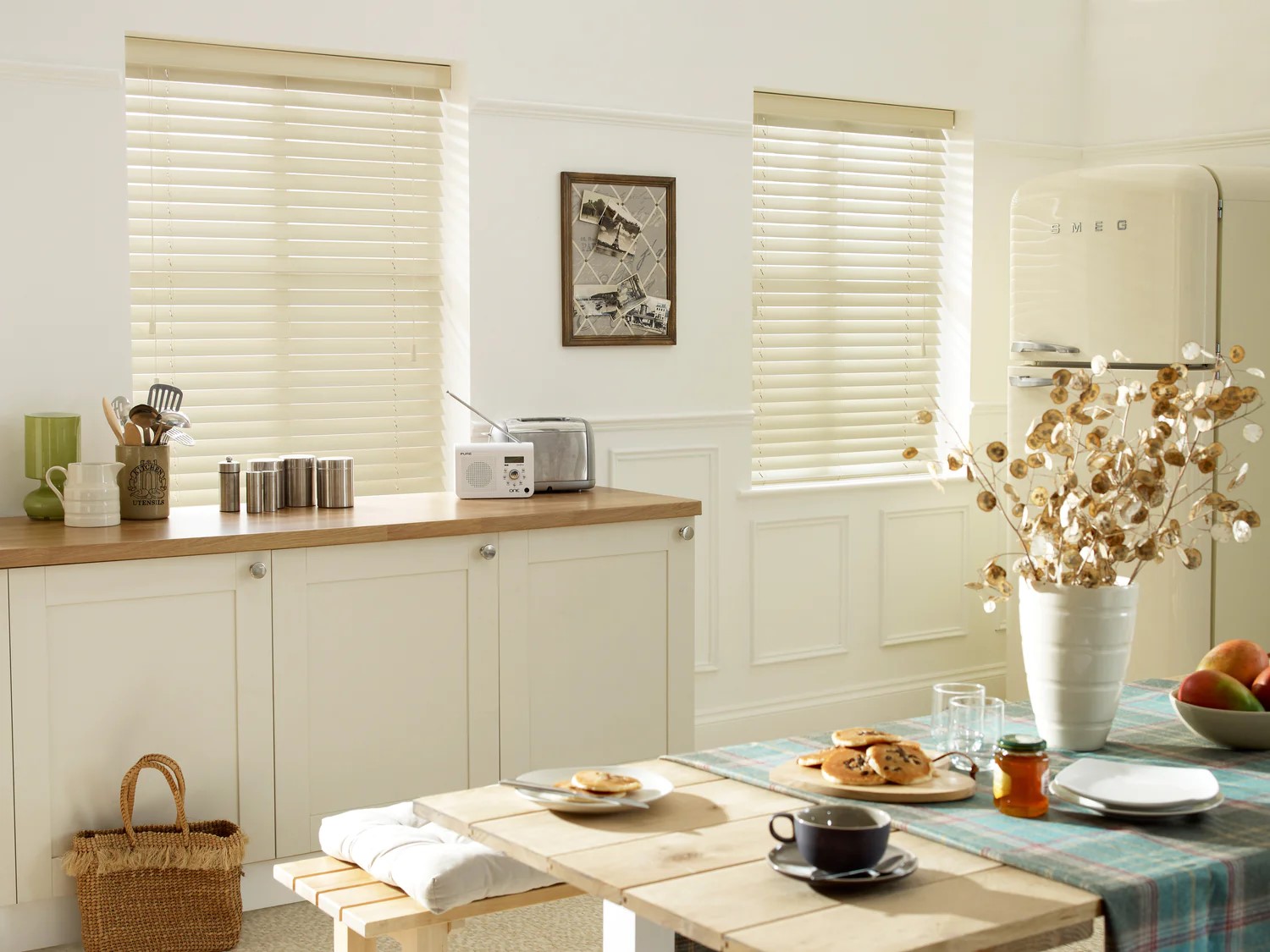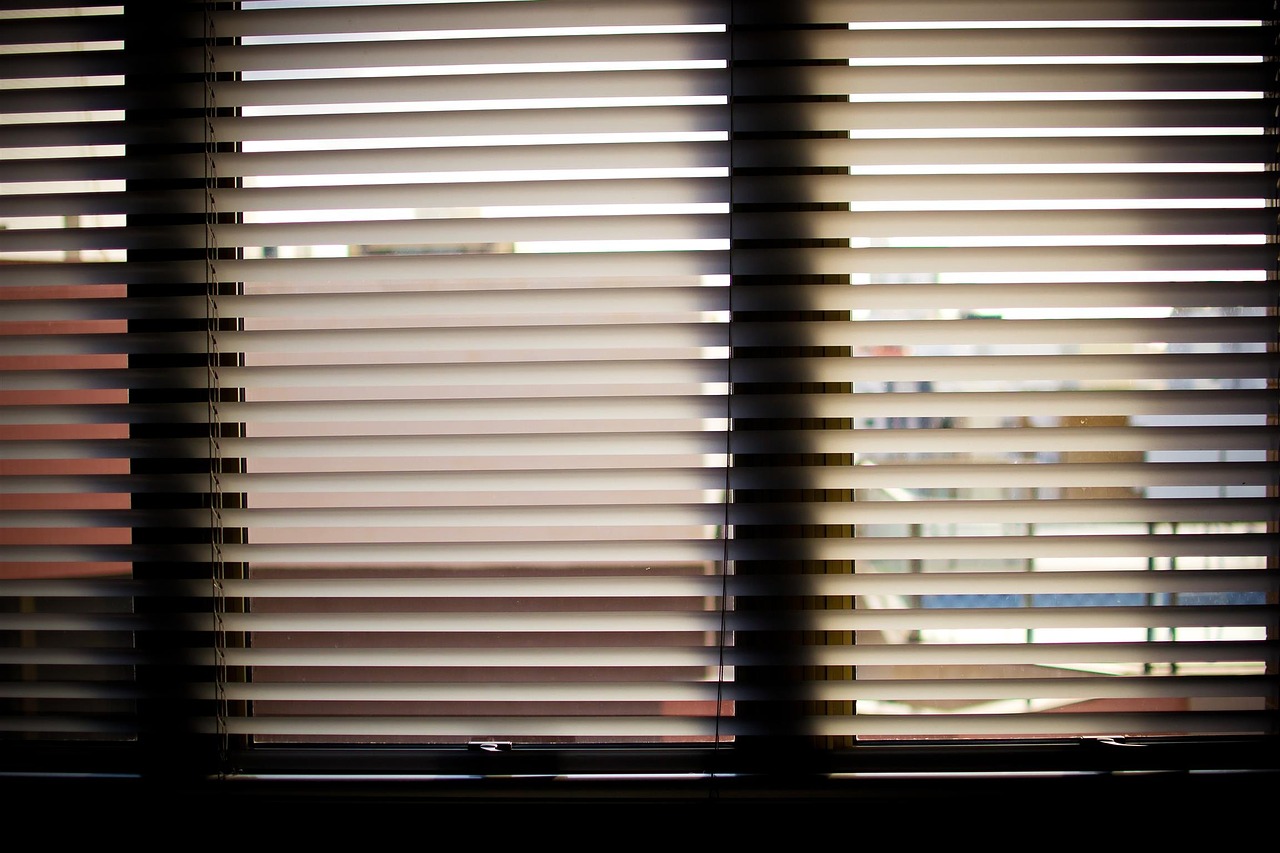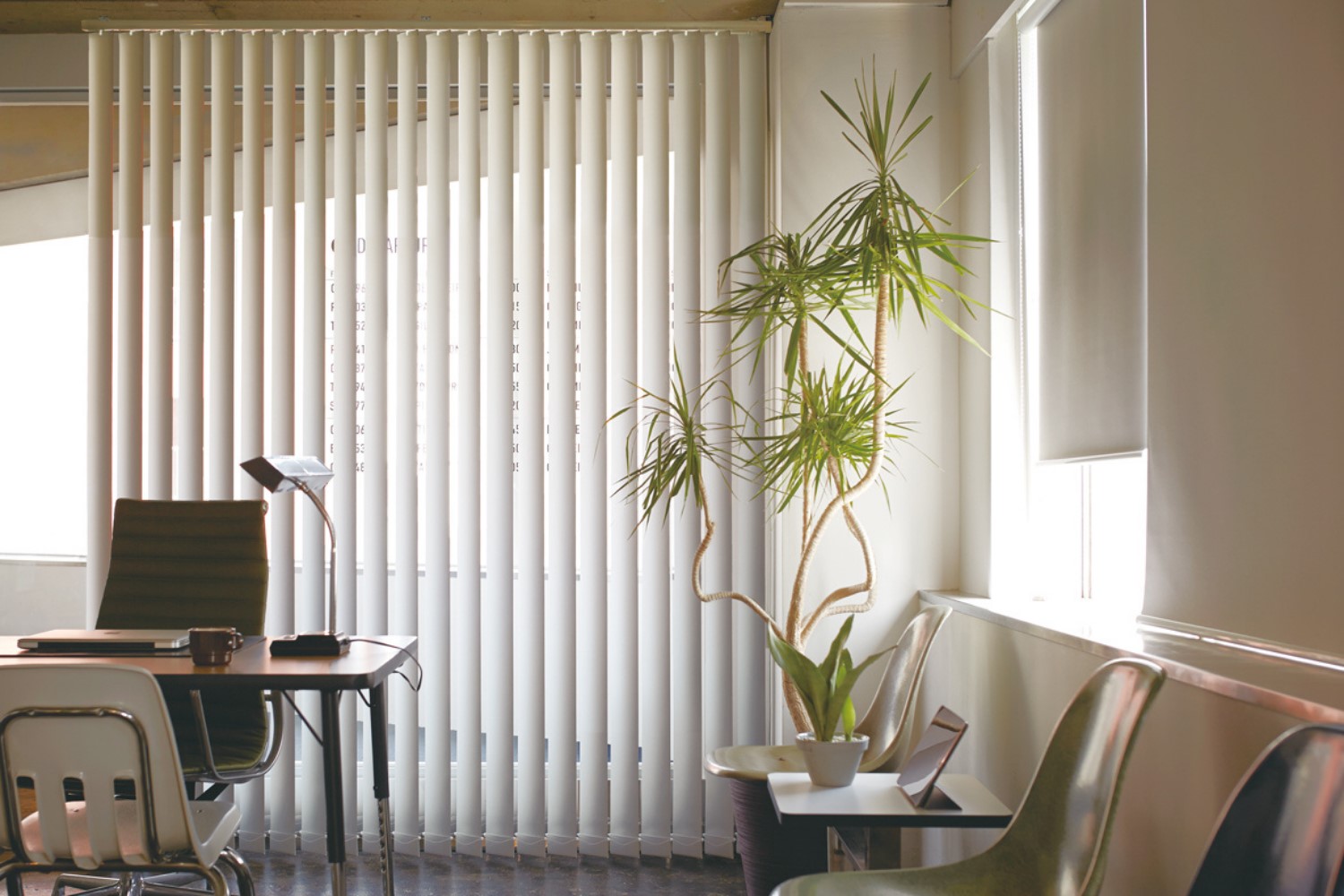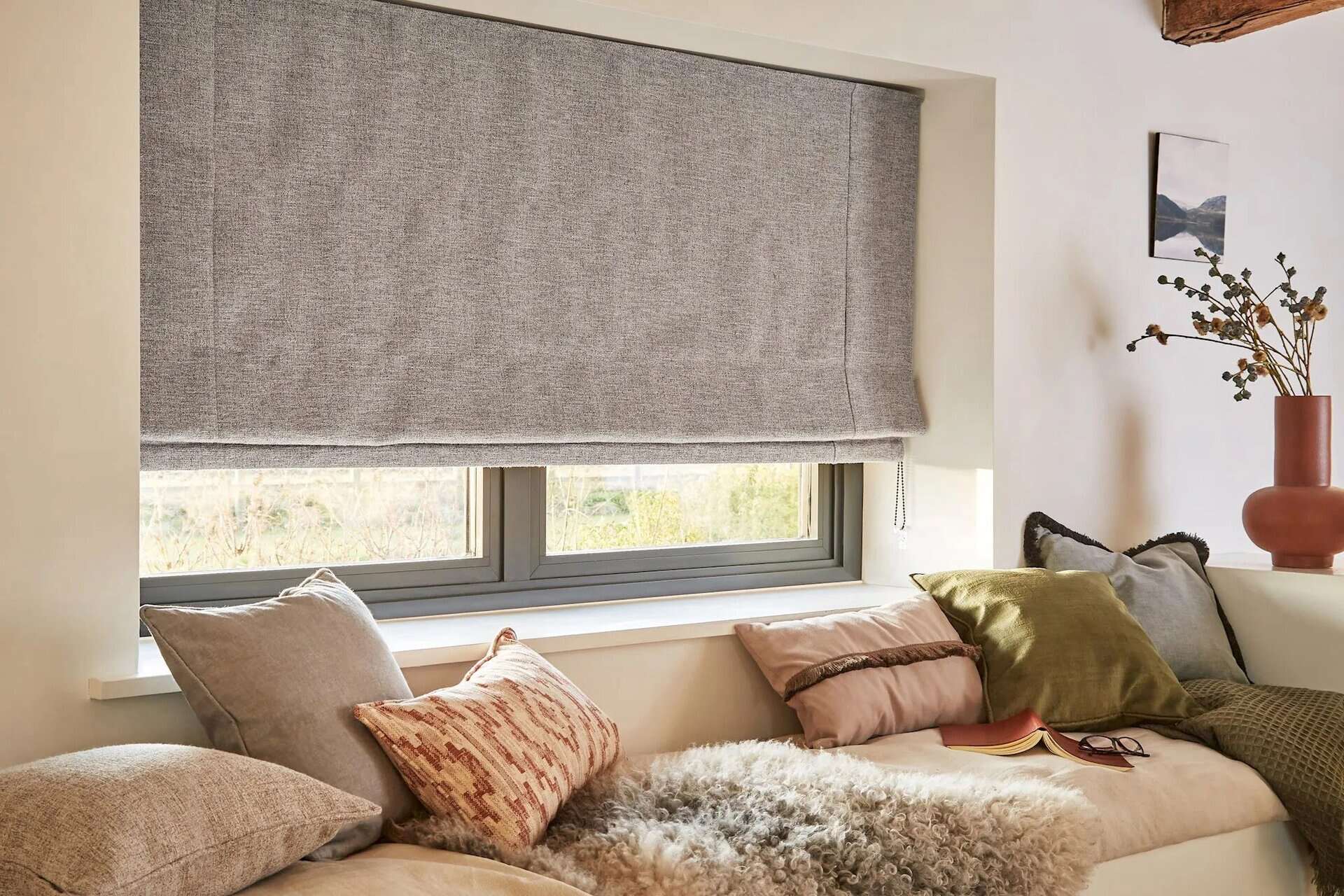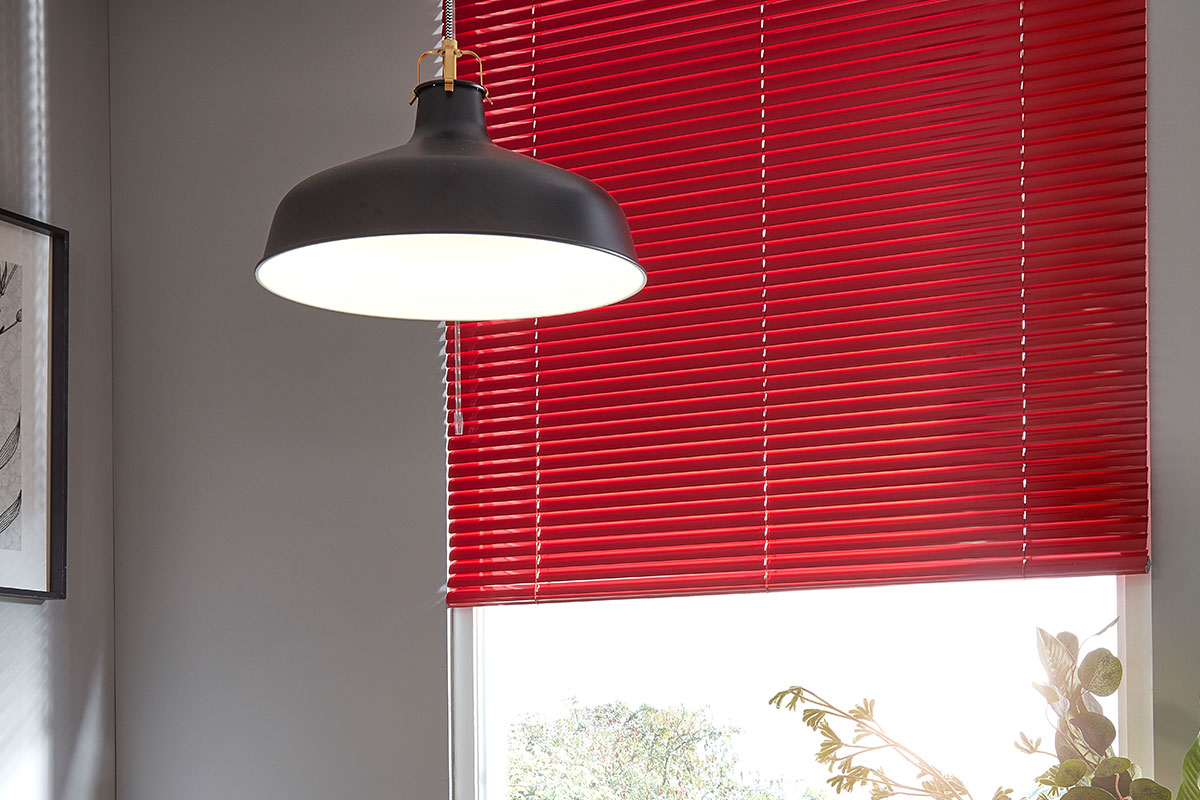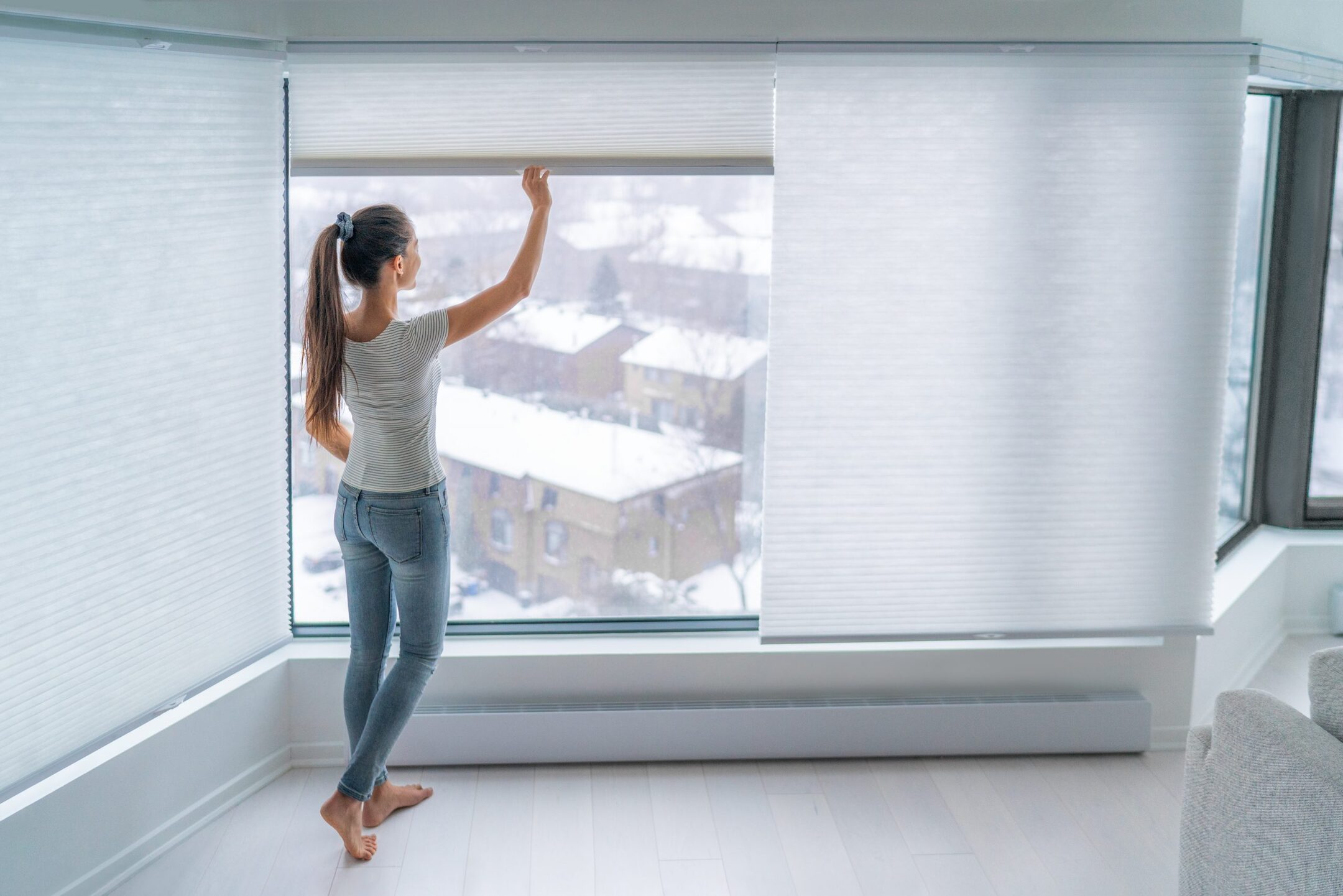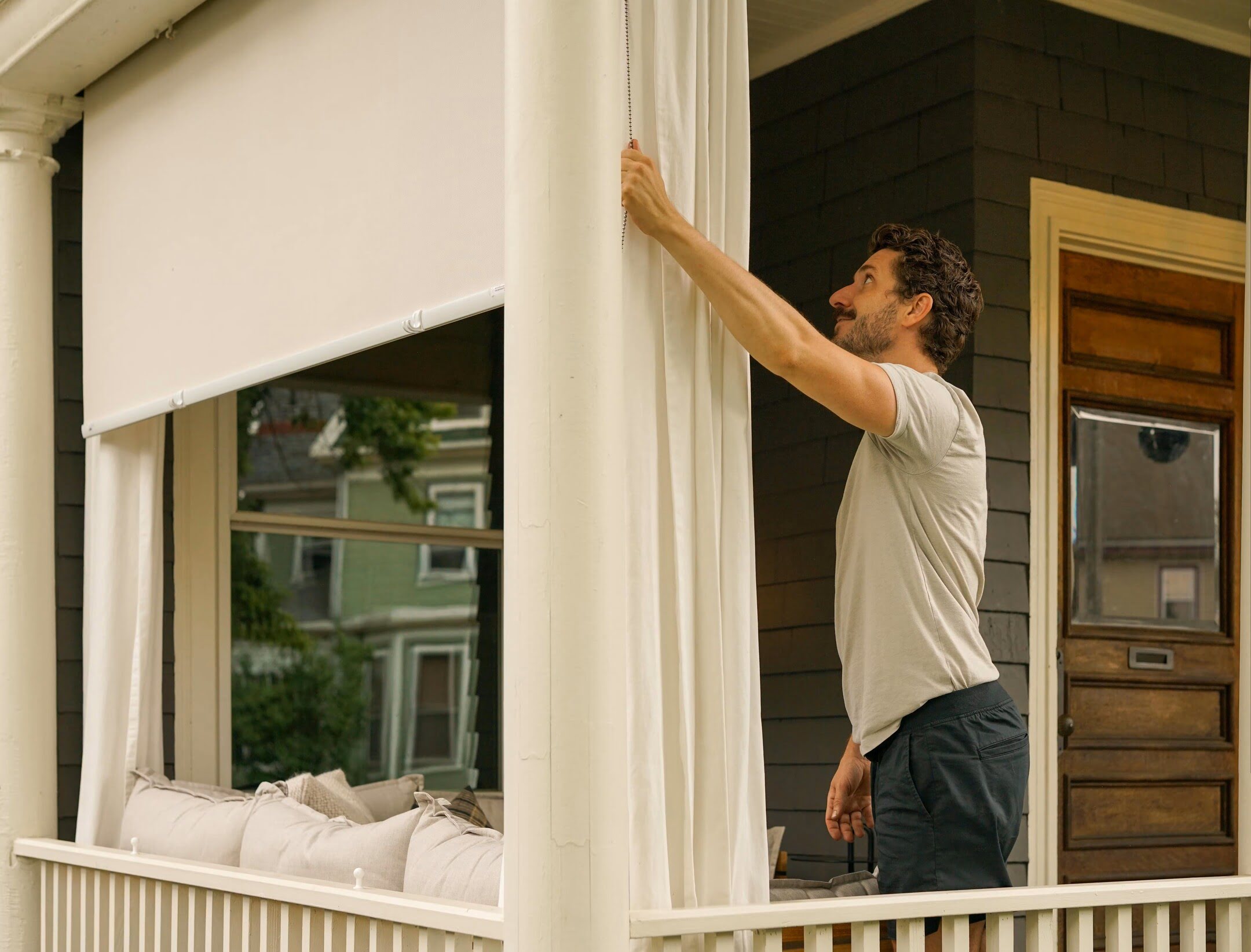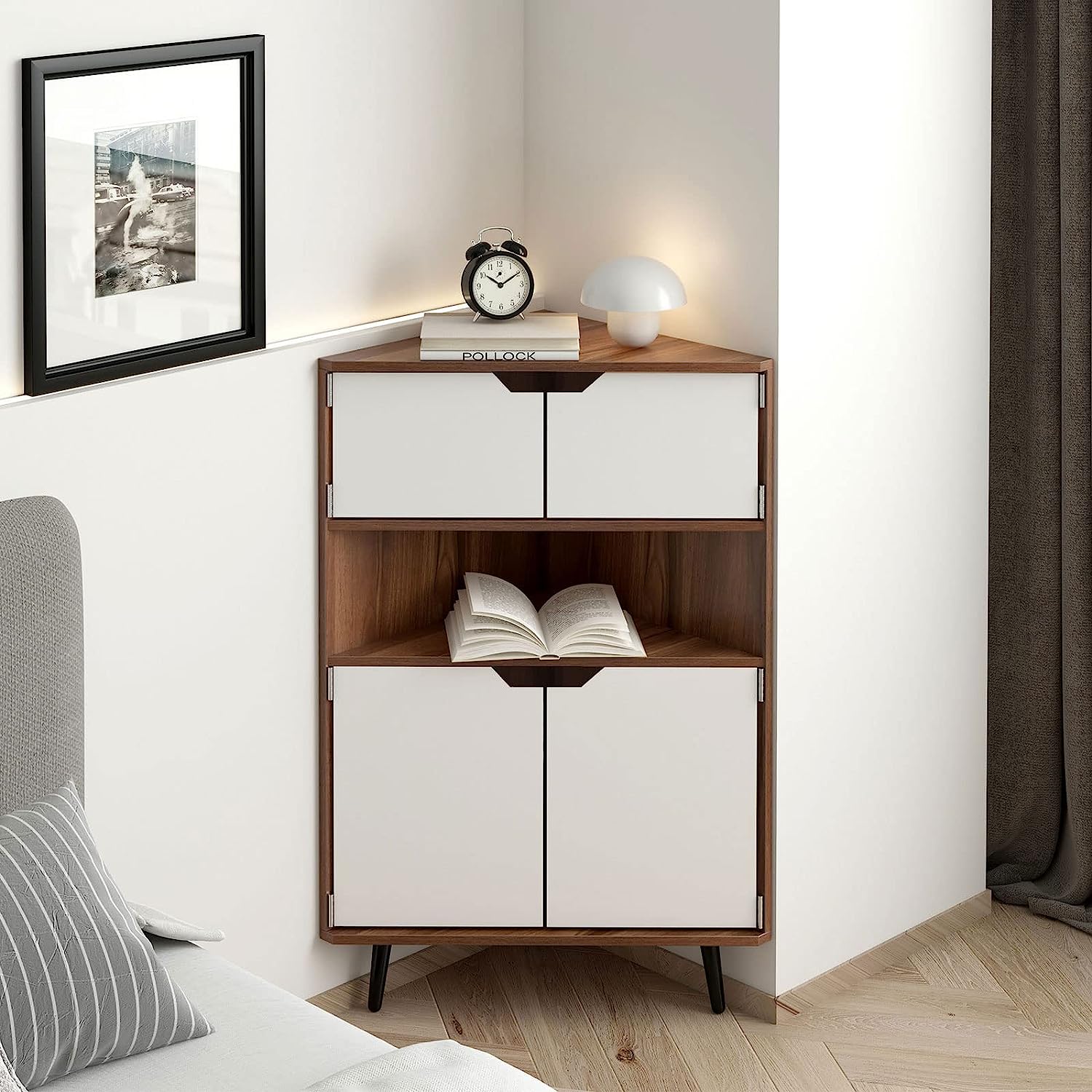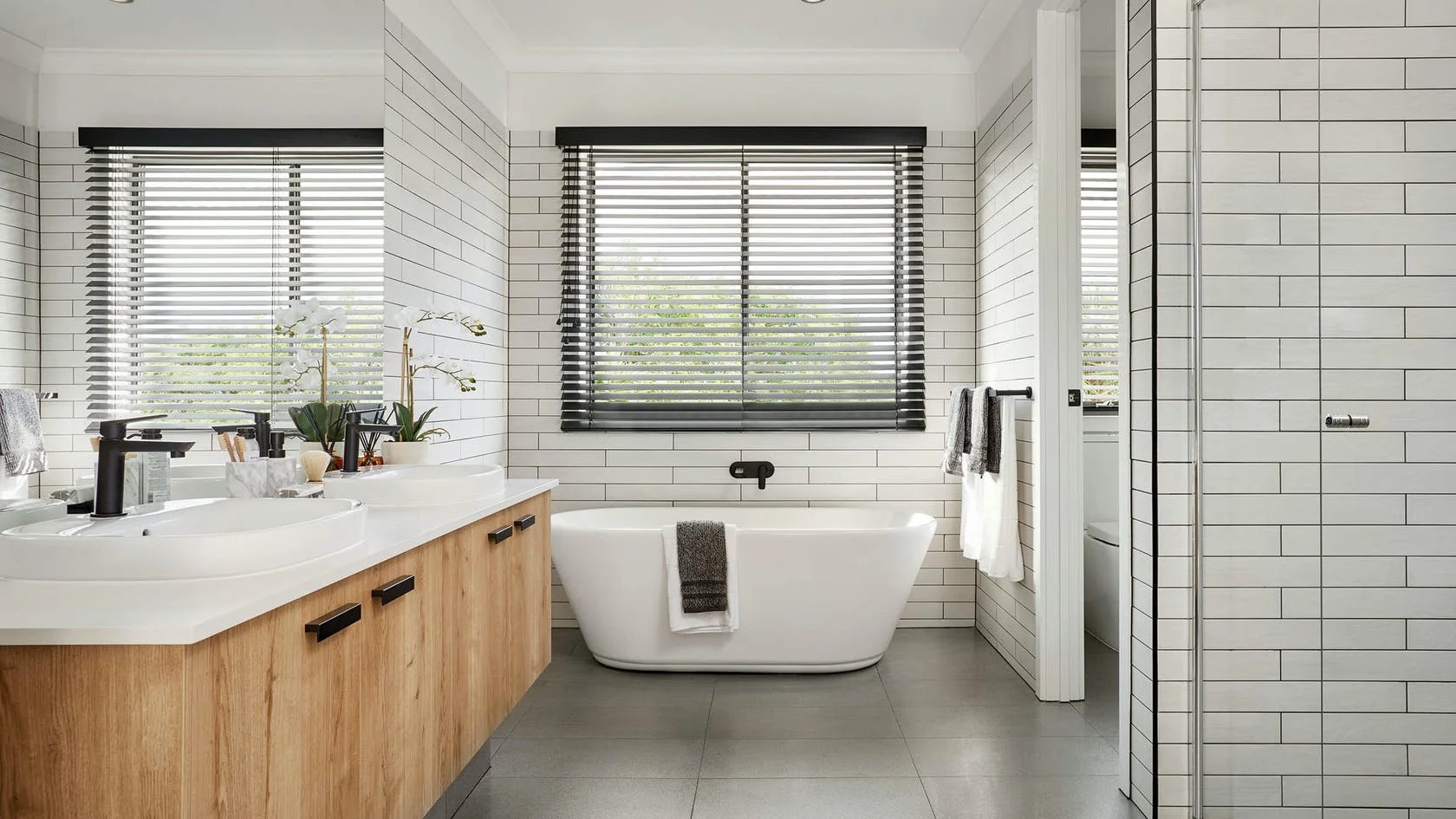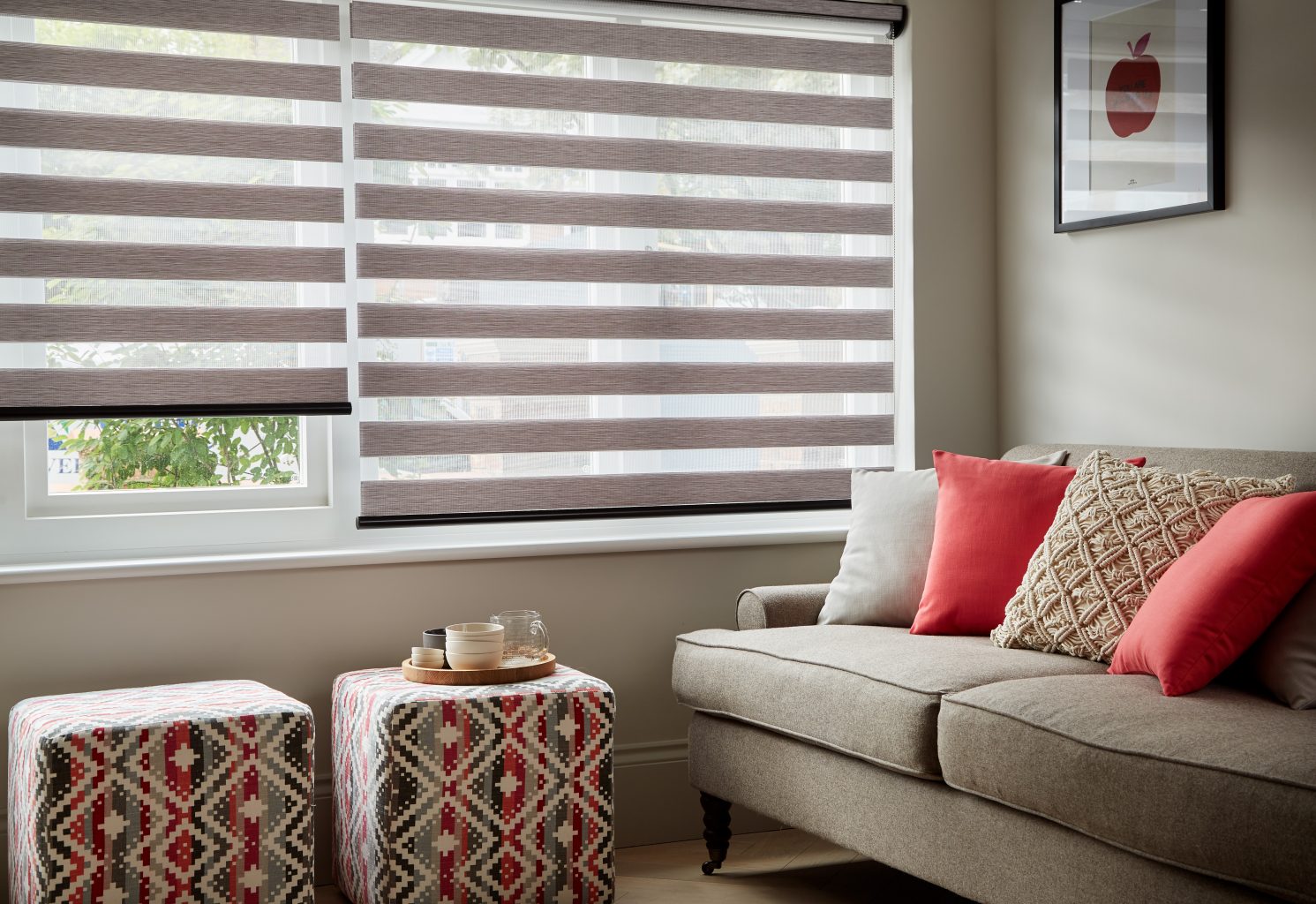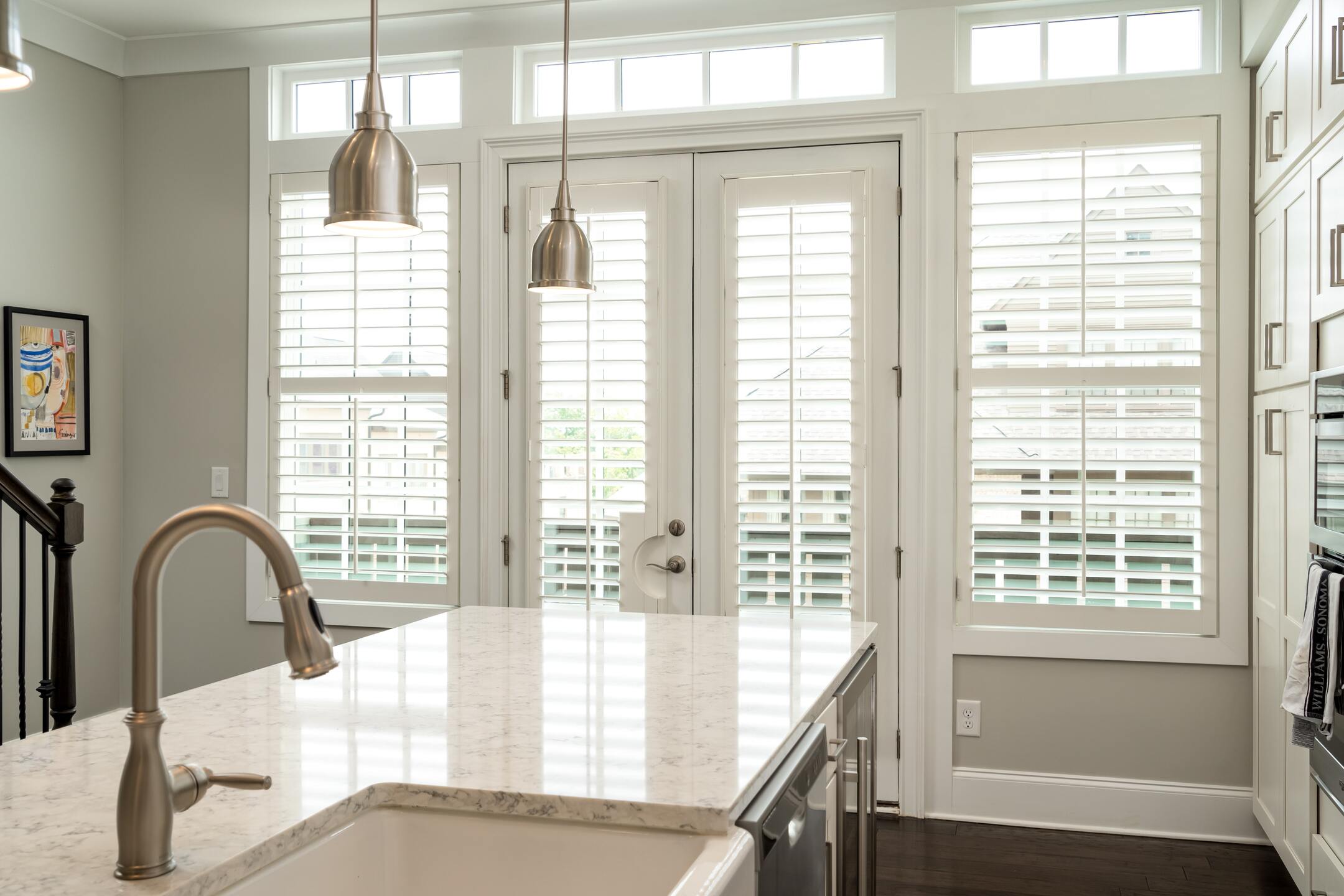

Articles
What Are Plantation Blinds
Modified: January 18, 2024
Discover the benefits and features of plantation blinds in our informative articles. Enhance your home's style and functionality with these versatile window treatments.
(Many of the links in this article redirect to a specific reviewed product. Your purchase of these products through affiliate links helps to generate commission for Storables.com, at no extra cost. Learn more)
Introduction
Welcome to the world of plantation blinds! If you’re looking for a stylish and functional window treatment option, plantation blinds could be the perfect choice for you. These versatile blinds have become increasingly popular in recent years, and for good reason. With their classic design, durability, and ability to regulate light and privacy, plantation blinds offer a range of benefits that can enhance any space.
In this article, we’ll explore everything you need to know about plantation blinds. From their history and materials used to their advantages and popular styles, we’ll cover it all. Whether you’re a design enthusiast, a homeowner looking to upgrade their windows, or an interior designer searching for inspiration, this article will provide you with valuable insights into the world of plantation blinds.
So, let’s dive in and discover what makes plantation blinds such a popular choice for window treatments!
Key Takeaways:
- Plantation blinds, inspired by historic southern plantation shutters, offer timeless elegance, precise light control, and customizable options, making them a stylish and practical window treatment solution for any space.
- When choosing plantation blinds, consider factors such as material, style, light control, window size, installation, budget, and maintenance requirements to make an informed decision that enhances the beauty and functionality of your windows.
Read more: How To Install Plantation Blinds
Definition of Plantation Blinds
Plantation blinds, also known as plantation shutters, are a type of window covering that consists of horizontal slats or louvers that can be adjusted to control light and privacy. The design of plantation blinds is inspired by the shutters used in grand plantation houses in the southern United States during the 18th and 19th centuries. These shutters were typically made of wood and featured wide slats that could be opened or closed to regulate the flow of air and sunlight.
Modern plantation blinds retain the classic look and functionality of their historical counterparts, but with some notable advancements. While traditional plantation shutters are often permanently attached to the window frame, plantation blinds are typically mounted on the inside of the window and can be easily opened or closed using a tilt rod or motorized mechanism.
One of the distinguishing features of plantation blinds is the size of their slats. Unlike traditional blinds, which typically have narrower slats, plantation blinds have wide slats that can range from 2 to 5 inches in width. This larger size not only adds to their aesthetic appeal but also provides enhanced control over light and privacy. When the slats are fully open, plantation blinds allow for maximum light and unobstructed views. By tilting the slats, you can adjust the amount of light entering the room while still maintaining privacy.
Plantation blinds are available in a variety of materials, including wood, vinyl, and composite materials. Each material has its own unique advantages and can be selected based on personal preference, budget, and the specific needs of the space.
Overall, plantation blinds offer a timeless and elegant window treatment option that combines style, functionality, and versatility. Whether used in traditional or contemporary settings, they can add a touch of sophistication to any room while providing practical benefits.
History of Plantation Blinds
The history of plantation blinds can be traced back to the grand plantation houses in the southern United States during the 18th and 19th centuries. These houses, known for their sprawling estates and architectural grandeur, required a window covering that could provide both shade and ventilation in the warm and humid climate.
Traditional plantation shutters, which inspired the design of modern plantation blinds, were made of solid wood and consisted of wide slats that could be adjusted to allow air and light to flow through. This design was essential in the southern plantation houses, as it provided relief from the intense heat while still maintaining privacy.
As time went on, the popularity of plantation shutters spread beyond the southern United States and began to be used in homes across the country. However, the traditional shutters were fixed in place and did not offer the flexibility and convenience of modern plantation blinds.
In the early 20th century, advancements in technology led to the development of blinds with adjustable slats, giving birth to the modern plantation blinds we know today. This innovation allowed homeowners to control the amount of light and privacy in their homes with ease.
Over the years, plantation blinds have evolved in terms of materials used and design styles. Originally made predominantly from wood, they are now available in various materials, including vinyl and composite materials, which offer increased durability and resistance to moisture.
The timeless design of plantation blinds has remained popular throughout the years, and they continue to be a sought-after window treatment option. Their association with grand plantation houses has given them a touch of elegance and sophistication that resonates with many homeowners and interior designers.
Today, plantation blinds are widely adopted in both residential and commercial spaces. They are favored for their ability to seamlessly blend with different interior design styles, from traditional to contemporary. Whether used in living rooms, bedrooms, or even offices, plantation blinds add a touch of class and functionality to any space.
The history of plantation blinds showcases their enduring appeal and the practical advantages they offer. From their humble origins in southern plantation houses to their widespread use today, plantation blinds have truly stood the test of time.
Materials Used in Plantation Blinds
Plantation blinds are available in a variety of materials, each with its own unique features, benefits, and style. The choice of material greatly affects the overall look, durability, and maintenance requirements of the blinds. Let’s explore some of the most common materials used in plantation blinds:
- Wood: Wood is the classic and most traditional material used in plantation blinds. It offers a timeless and elegant look, with natural grain patterns that add warmth and character to any space. Wood plantation blinds are typically made from hardwoods such as basswood, oak, or cedar. They provide excellent insulation properties, durability, and can be stained or painted to match any interior decor. However, wood blinds may be susceptible to moisture and humidity, so they are not recommended for high-moisture areas like bathrooms.
- Vinyl: Vinyl plantation blinds are a popular choice due to their affordability, versatility, and durability. They are made from PVC (polyvinyl chloride), which is a synthetic material that is resistant to moisture, humidity, and fading. Vinyl blinds are easy to clean and maintain, making them suitable for high-humidity areas such as kitchens and bathrooms. They come in a wide range of colors and finishes, allowing you to find the perfect match for your decor.
- Composite Materials: Composite plantation blinds are made from a combination of wood fibers and synthetic materials. This blend results in blinds that are more resistant to moisture than traditional wood blinds. Composite materials offer the beauty of natural wood with added durability and resistance to warping, cracking, and fading. They are an excellent choice for areas with high humidity or temperature fluctuations.
- Aluminum: Aluminum plantation blinds are known for their sleek and modern appearance. They are lightweight, durable, and resistant to rust and corrosion. Aluminum blinds are often used in commercial spaces or contemporary interiors due to their clean lines and easy operation. They come in a range of finishes, including brushed, polished, or matte, allowing for customization to match any decor style.
When choosing the material for your plantation blinds, consider factors such as the room’s moisture levels, your budget, and the desired aesthetic. Each material has its own set of advantages and considerations, so it’s important to select one that best suits your specific needs.
Whether you prefer the natural beauty of wood, the affordability of vinyl, or the durability of composite materials, plantation blinds offer a variety of material options to ensure that you find the perfect blend of style and functionality for your windows.
Advantages of Plantation Blinds
Plantation blinds offer a range of advantages that make them a popular choice for window treatments. Whether you’re looking to enhance the aesthetics of your space, protect your privacy, or regulate light and ventilation, plantation blinds have you covered. Let’s explore some of the key advantages of plantation blinds:
- Classic and Timeless Design: With their wide slats and elegant appearance, plantation blinds add a touch of sophistication and style to any room. They have a timeless design that complements both traditional and contemporary interior styles, making them a versatile choice.
- Regulate Light and Privacy: One of the primary advantages of plantation blinds is their ability to offer precise control over light and privacy. By adjusting the slats, you can easily regulate the amount of sunlight entering the room. They allow you to enjoy natural light while still maintaining privacy.
- Enhanced Insulation: Plantation blinds, particularly those made of wood, provide excellent insulation properties. They help to reduce heat transfer, keeping your space cooler in the summer and warmer in the winter. This can result in energy savings and a more comfortable living environment.
- Durability: Plantation blinds are built to last. Depending on the material chosen, they can resist wear and tear, fading, and warping. This durability ensures that your investment in window treatments will withstand the test of time.
- Easy Maintenance: Plantation blinds are relatively easy to clean and maintain. Most materials can be wiped down with a damp cloth or dusted regularly. This makes them a practical choice for busy households or individuals with limited time for extensive cleaning.
- Customizable: Plantation blinds come in a variety of styles, finishes, and materials, allowing for customization to match your unique taste and interior decor. You can choose the slat size, color, and material that best fits your aesthetic preferences and design vision.
- Allergy-Friendly: Unlike fabric window treatments, plantation blinds do not trap dust, allergens, or pet dander. They are a great option for individuals with allergies or respiratory sensitivities, as they contribute to a cleaner and healthier indoor environment.
Whether you’re concerned about aesthetics, light control, insulation, or ease of maintenance, plantation blinds offer a range of advantages that cater to your needs. Their timeless design and practical features make them a versatile and functional window treatment option for any space.
Plantation blinds, also known as plantation shutters, are a type of window treatment with wide slats that can be tilted open or closed. They provide a classic and elegant look to any room while also offering privacy and light control.
Read also: 11 Incredible Plantation Blinds for 2024
Disadvantages of Plantation Blinds
While plantation blinds offer numerous advantages, it’s important to consider the potential disadvantages as well. Understanding both the pros and cons can help you make an informed decision about whether plantation blinds are the right choice for your windows. Here are some potential disadvantages to consider:
- Cost: Plantation blinds, especially those made of high-quality materials like solid wood, can be more expensive than other window treatment options. The initial investment required for plantation blinds might be higher, particularly if you have larger windows or custom sizing needs.
- Installation: Properly installing plantation blinds can be a bit more complex compared to other types of window coverings. It may require professional installation to ensure a precise fit and smooth operation.
- Space Requirements: Plantation blinds are mounted on the inside of the window frame, which means they occupy space when opened. This can reduce the window’s opening size and limit the amount of natural light coming into the room when the blinds are fully open.
- Maintenance: While plantation blinds are relatively easy to maintain and clean, they still require periodic dusting and cleaning to keep them in good condition. This can be more labor-intensive compared to some other window treatments that are easier to clean, such as roller shades.
- Susceptibility to Damage: Depending on the material chosen, plantation blinds may be more susceptible to damage in certain environments. For example, wood blinds may warp or discolor if exposed to excessive moisture or high humidity. Vinyl blinds may crack or become brittle over time with prolonged exposure to direct sunlight.
- Limited Light Control: While plantation blinds provide good light control overall, they may still allow some light to filter through the slats, even when fully closed. If you require complete darkness or maximum privacy, you might need additional window treatments such as blackout curtains or blinds.
It’s important to weigh these potential disadvantages against the benefits of plantation blinds when making your decision. Considering your specific needs, budget, and the characteristics of your space will help you determine if plantation blinds are the right choice for your windows.
Popular Styles and Designs of Plantation Blinds
Plantation blinds come in a variety of styles and designs to suit different decor preferences and window shapes. From classic to contemporary, there are options available to complement any interior style. Here are some popular styles and designs of plantation blinds:
- Traditional: Traditional plantation blinds feature wide slats with a classic and timeless look. These blinds are often made of wood and can be stained or painted in various finishes to match the decor. They offer an elegant and sophisticated touch to any space and are particularly well-suited for traditional or vintage-inspired interiors.
- Louvered: Louvered plantation blinds have slats that are slightly curved, resembling the louvered shutters of historic plantation houses. These blinds add a charming architectural detail to the windows and are available in both wood and faux wood materials. The curved slats provide a unique visual interest and allow for increased airflow and light control.
- Wide Slat: Wide slat plantation blinds, typically ranging from 2 to 5 inches in width, are a popular choice for a modern and contemporary aesthetic. These blinds offer a sleek and minimalistic look that complements clean lines and open spaces. They are available in various materials, including vinyl and aluminum, offering a wide range of color options to match any decor style.
- Tier on Tier: Tier on tier plantation blinds consist of two sets of blinds installed on the same window frame, allowing you to open the top and bottom sections independently. This design provides versatile light and privacy control. You can keep the top section open for natural light while maintaining privacy in the bottom section, or vice versa. Tier on tier blinds are a popular choice for rooms where privacy and flexibility are key, such as bedrooms or street-facing windows.
- Café Style: Café style plantation blinds cover only the lower portion of the window, leaving the top section open. This style originated from French cafes that wanted to prevent direct sunlight from disturbing patrons sitting at eye level. Café style blinds offer a charming and informal look, allowing natural light to flood into the room while still maintaining privacy in the lower section.
These are just a few of the popular styles and designs of plantation blinds. The choice of style depends on your personal taste, the overall aesthetic of your space, and the level of light and privacy control desired. It’s essential to explore different options and consider how each style will enhance the ambiance of your room.
Remember, you can also customize plantation blinds by selecting the material, slat size, and finish that best suits your preferences. This flexibility ensures that you can find the perfect plantation blinds to elevate the look of your windows and complement your interior design.
Proper Cleaning and Maintenance of Plantation Blinds
To ensure that your plantation blinds remain in excellent condition and continue to enhance the look of your windows, it’s important to follow proper cleaning and maintenance practices. Here are some tips to help you keep your plantation blinds clean and well-maintained:
- Dust Regularly: Dust accumulation is a common issue with blinds. Use a soft, dry cloth or a feather duster to remove dust from the slats regularly. Begin at the top and work your way down, being thorough with each slat.
- Vacuum with Brush Attachment: For deeper cleaning, use a vacuum cleaner with a brush attachment to gently remove any dust and debris. Ensure you adjust the suction to a lower setting to prevent damaging the blinds. Run the brush attachment along each slat, making sure to cover both sides.
- Spot Cleaning: If you notice any stains or spots on the blinds, spot clean them using a mild detergent or a blind-specific cleaning solution. Dampen a soft cloth with the cleaning solution and gently wipe the affected area. Avoid using excessive water, as it may cause damage to the blinds.
- Avoid Excessive Moisture: If your plantation blinds are made of wood, it’s important to avoid excessive exposure to moisture. This can cause warping or damage to the material. In areas with high humidity, consider using blinds made from vinyl or composite materials, which are more resistant to moisture.
- Protect from Direct Sunlight: Prolonged exposure to direct sunlight can cause the slats of plantation blinds to fade or become brittle. Consider using window films or curtains to help protect the blinds from UV rays.
- Inspect and Repair: Regularly inspect your plantation blinds for any signs of damage, such as broken slats or malfunctioning mechanisms. Address any issues promptly to prevent further damage. Consult the manufacturer’s instructions or contact a professional for repairs if needed.
- Follow Manufacturer’s Guidelines: Different materials and finishes may require specific cleaning and maintenance instructions. Always refer to the manufacturer’s guidelines and recommendations for proper care and maintenance of your specific type of plantation blinds.
By following these cleaning and maintenance practices, you can keep your plantation blinds looking clean, fresh, and in optimal condition for years to come. Regular maintenance not only helps preserve the visual appeal of the blinds but also ensures their longevity and functionality.
Remember, if you’re unsure about the proper cleaning techniques or have specific concerns about your plantation blinds, it’s always best to consult the manufacturer’s guidelines or seek professional advice.
Factors to Consider When Choosing Plantation Blinds
When selecting plantation blinds for your windows, there are several factors to consider to ensure that you make the right decision. From style and functionality to budget and installation, taking these factors into account will help you choose the perfect plantation blinds for your space. Here are some key factors to consider:
- Material: The choice of material for your plantation blinds will impact their appearance, durability, and maintenance requirements. Consider factors such as moisture resistance, insulation properties, and overall aesthetic when deciding between wood, vinyl, or composite materials.
- Style and Design: Determine the style and design of plantation blinds that best complements your interior decor. Consider factors such as slat size, shape, color, and finish to select blinds that enhance the overall look and ambiance of your space.
- Light and Privacy Control: Think about the level of light control and privacy you require for the room. Wide slats and adjustable louvers offer greater control over light and privacy, allowing you to customize the amount of light entering the space and the degree of visibility from the outside.
- Window Size and Shape: Consider the size and shape of your windows. Some plantation blinds may work better on certain window types, such as bay windows or French doors. Take accurate measurements and ensure that the blinds you choose fit properly within the window frame.
- Installation: Evaluate the installation process and determine whether you’re comfortable with a DIY approach or if you prefer to hire a professional. Some blinds may require more complex installation procedures, particularly if you have unique window configurations or large windows.
- Budget: Determine your budget for plantation blinds, taking into account not only the initial purchase costs but also any long-term maintenance expenses. Consider the quality of the materials, warranty, and durability when assessing the value for your investment.
- Room Function and Environment: Consider the specific needs of the room where the plantation blinds will be installed. For high-moisture areas such as bathrooms or kitchens, consider using moisture-resistant materials like vinyl or composite blinds. Also, assess the level of natural light, temperature fluctuations, and potential exposure to direct sunlight when selecting blinds.
- Maintenance Requirements: Think about how much time and effort you’re willing to dedicate to cleaning and maintaining your plantation blinds. Some materials and designs may require more frequent cleaning or special care, so consider your lifestyle and availability for maintenance tasks.
Each of these factors will contribute to your decision-making process when choosing plantation blinds. Evaluating your specific needs, preferences, and constraints will help you narrow down your options and find the perfect plantation blinds that meet both your functional and aesthetic requirements.
Take your time, do thorough research, and consider consulting with experts or retailers to ensure that you make an informed decision that will enhance the beauty and functionality of your windows.
Read more: How Much Do Plantation Blinds Cost
Conclusion
Plantation blinds offer a stylish, functional, and versatile window treatment option for any space. With their timeless design, wide slats, and adjustable louvers, plantation blinds provide a range of benefits that enhance the aesthetics and functionality of your windows.
We explored the definition and history of plantation blinds, tracing their origins back to the grand plantation houses of the southern United States. From their humble beginnings, plantation blinds have evolved to become a popular choice for homeowners and interior designers around the world.
The materials used in plantation blinds, such as wood, vinyl, and composite, offer different advantages and cater to various needs and preferences. Whether you appreciate the natural appeal of wood, the affordability of vinyl, or the durability of composite materials, there is a material option to suit your style and requirements.
We discussed the advantages of plantation blinds, such as their classic design, light and privacy control, enhanced insulation, and easy maintenance. These blinds offer a timeless and elegant look while providing practical benefits such as energy efficiency and allergen resistance.
While plantation blinds have many advantages, it’s essential to consider the potential disadvantages, such as the cost, installation complexity, and maintenance requirements. By weighing both the pros and cons, you can make an informed decision that aligns with your preferences and needs.
We also explored popular styles and designs of plantation blinds, including traditional, louvered, wide slat, tier on tier, and café style. Each style offers a distinct look and lends itself to different interior design aesthetics.
In addition, we provided guidance on how to properly clean and maintain plantation blinds, ensuring their longevity and optimal performance. Regular dusting, spot cleaning, and following manufacturer’s instructions will keep your blinds looking fresh and in excellent condition.
Finally, we discussed the important factors to consider when choosing plantation blinds, including material, style, light control, window size and shape, installation, budget, room function, and maintenance requirements. By considering these factors, you can make a well-informed decision and select the perfect plantation blinds for your windows.
In conclusion, plantation blinds offer a stylish and practical window treatment solution that adds beauty, functionality, and versatility to any space. With their timeless design, precise light control, and customizable options, plantation blinds are an excellent choice for homeowners and interior designers who seek a classic and elegant window covering.
Frequently Asked Questions about What Are Plantation Blinds
Was this page helpful?
At Storables.com, we guarantee accurate and reliable information. Our content, validated by Expert Board Contributors, is crafted following stringent Editorial Policies. We're committed to providing you with well-researched, expert-backed insights for all your informational needs.
